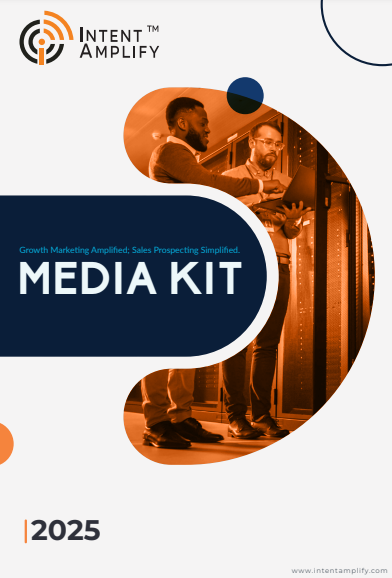
Why B2B Brands Should Create Interactive Demos
- Last updated on: August 21, 2025
B2B buyers have higher expectations today than a basic slide deck and standard sales pitch. They want to experience solutions, try features in real-time, and understand value without waiting on yet another follow-up call. Interactive demos make these expectations a reality by transforming the buying journey into personalized and engaging experiences.
According to a study conducted by Gartner, 77% of B2B buyers describe their last purchase as very complex or difficult. And as such, interactive demos are becoming a key resource in simplifying that journey. For brands that want to increase engagement, speed up conversion, and enhance customer trust, interactive demos are no longer optional; they are a must-have!
Why Traditional Demos Are Falling Short
For decades, product demonstrations and presentations have been used in a passive manner where reps guided their prospects along a preset path. We had no interaction, engagement, or personalization to follow through in the process. More importantly, the static presentation style is becoming more out of sync with how today’s buyers behave. Buyers today perform extensive research prior to reaching out to sales, and are often 57-70% of the way through their buyer journey before even talking with a sales rep. When the person does agree to a product demo, they want to engage with the product—not listen to another lecture.
Also, generic demos tend to overlook the provision of use cases that relate to the buyer’s specific business needs. As prospect disengagement and deals stall, along with sales cycle time hitting all-time highs, B2B brands are leaning toward the interactive product demo that allows buyers to see, touch, and experience the product on their own terms.
The Rise of Interactive Demos in B2B Sales
Interactive demos merge storytelling about products with hands-on exploration. Instead of simply viewing a scripted walkthrough, prospects get to explore the features on their own, prompted with messages as well as real-time data simulations, so the experience is immersive and focused on the buyer.
Research by Reprise found that 78% of B2B buyers indicate they’re more likely to buy after encountering a personalized interactive demo. The traction around product-led growth (PLG) strategies has accelerated this, as many SaaS businesses began incorporating interactive demos directly into their websites to offer a self-service option.
For B2B sales teams, this is a powerful way to qualify leads, expedite proof-of-value, and differentiate against their competitors, who are largely still presenting static presentations.
Key Benefits of Interactive Demos
a. Enhanced customer involvement
By giving them control, interactive demos and experiences pique prospects’ curiosity. This causes potential customers to experience a product actively rather than passively, which increases recall and interest. Participation equals attention, as evidenced by studies showing that interactive content receives twice as much engagement as static content in any form.
b. Sales cycles that are shorter
Interactive demos reduce the time it takes to get prospects to choose by demonstrating value early in the experience. Eubrics states that many of today’s B2B buyers appreciate that interactive demos allow them to come to a deeper understanding quicker, expediting the process of building consensus across buying committees.
c. Personalized Value Delivery.
No two buyers share the same priorities. Interactive demos can be tailored to highlight the tools and workflows that are most relevant to the prospect’s pain points. This means the customer participates in the demo because they see immediate value in their specific business difficulties.
d. Better Lead Qualification
Interactive demos can then also be a qualification tool. Within the demo tool, the sales team can track which features the prospect spent the most time on, meaning the intent data is valuable. This gives the sales rep better follow-up options and refined pitches for the following conversation, which can lead to higher conversion rates.
Best Practices for Creating Effective Interactive Demos
B2B organizations should be focusing on building interactive demos with purpose, not just technology, to give them the most impact. Some important things to keep in mind include:
- Focus on User Journey: Make sure to reinforce intuitive navigation that is aligned with your buyers’ priorities.
- Showcase Business Outcomes: Don’t only show features; exhibit tangible influence and business results.
- Allow for Self-Service: Embed demos on the web so prospects can check it out when / how they want.
- Use Analytics: Track if and how users engage with your demo to improve how you follow up and to optimize future demos.
When done correctly, interactive demos don’t just show a report; they help drive the sales cycle quicker.
Summary
In today’s B2B buyer journey, sales reps cannot solely rely on outdated sales tactics. Interactive demos offer a way to connect product complexities with buyer clarity. Interactive demos are a way for prospects to perform a hands-on demonstration of value. Versus simply a presentation to showcase value. They empower and include decision-makers, reduce buyer cycle time, and build credibility for the prospect because the prospect is in control of the process.
As many organizations scale and adopt product-led growth, there will be greater emphasis on interactive demos to give companies a competitive advantage in B2B sales. So, for the brands that want to try to be successful in a crowded marketplace, the question is not whether or not to explore building more interactive demos, but how fast your company can build?
FAQs
1. What is an interactive demo in B2B sales?
An interactive demo refers to a hands-on product experience, allowing buyers to interact with features on their terms, incorporating guided workflows instead of passively listening to a demo.
2. Why are interactive demos more effective than traditional demos?
Interactive demos put buyers in the proverbial driver’s seat. Allow them to highlight personalized value, and reduce the time it takes to make decisions versus traditional market full-feature presentations.
3. Do interactive demos work in all industries?
Yes, although very traditionally, this type of demo is more prominent in the SaaS technology space. Companies involved in cybersecurity, fintech, and any other enterprise solution are also noticing. An interactive demo experience allows customers to experience the full breadth and complexity that a product might entail.
4. Can an interactive demo replace sales reps?
No, an interactive demo cannot completely replace sales reps. Interactive show-and-tells are about self-service exploration without commitment. However, sales reps provide strategic intent and have the ability to consult.
5. How do brands measure the success of their interactive demos?
One way to monitor success is by seeing engagement time or the number of timed interactions with features. Or even the number of leads converted to opportunity status, while saving on the overall sales cycle.



